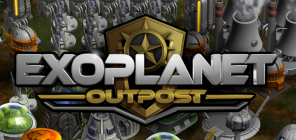Categories
Archive
AAA - America Against Ants: A Development Retrospective
The journey of AAA - America Against Ants has been anything but conventional, spanning over a decade and transforming across multiple mediums before finding its current form. What began as a simple digital experiment has evolved into a rich, story-driven strategy experience that captures the B-movie charm of 1950s creature features while delivering engaging tactical gameplay.
From Industry to Independence: The Digital Genesis (2013)
After years working full-time in the games industry, I made the leap to freelancing in 2013, drawn by the freedom to pursue my own creative vision. Having been fascinated by the atomic age sci-fi films of the 1950s as a child, particularly the giant ant thriller "Them!", I decided to channel that inspiration into my first independent game project.
The original AAA was conceived as a sprite-based hybrid that blended tower defense mechanics with real-time strategy elements. Set around the nuclear testing facilities of 1950s America, players commanded US military forces against swarms of giant, mutant ants that threatened to overrun the Southwest.
I chose GameMaker as my development platform, but I had no previous coding experience. This attempt would ultimately prove a tad too ambitious. While the systems design and core concept came together relatively smoothly, the technical implementation was a sticking point. Complex targeting behaviour for the military units proved beyond my ability to solve, and I reluctantly shelved the digital version and moved on to other projects, though AAA was always lurking there, in the recesses of my imagination.
Analog Evolution: The Board Game Years (2017)
Four years later, the giant ants came skittering back. In 2017, I decided to explore AAA through a different medium, though one I had a lot of experience with: board games. This allowed me to focus on pure game design without the technical barriers that had stymied the digital version.
The board game iteration reimagined AAA as a cooperative experience for 1-4 players, emphasizing teamwork against a relentless insect swarm. The core mechanic was a modular map system constructed from randomly drawn tiles, ensuring that each playthrough presented unique tactical challenges. Players worked together to destroy ant nests positioned at the top of the board while preventing the spawning ants from reaching the bottom edge, where their presence would advance a terror meter toward inevitable defeat.
Through subsequent iterations, I introduced light story elements via a card system that brought three distinct characters to life. Professor Gillian Carter was the scientific backbone of the resistance, an entomologist whose research into pheromone-based weapons provided players with specialized tools to disrupt ant behavior. General Gordon McCoy represented military authority and strategic thinking, offering logistical support and battlefield coordination through his card effects. Perhaps most importantly, Johnny Henderson started as a farmhand who becomes an inspirational ground commander, embodying the everyday American thrust into extraordinary circumstances.
These character cards didn't just provide mechanical benefits; they formed a narrative thread that gave emotional weight to the tactical decisions. Players weren't just moving units around a board, they were experiencing a story of unlikely heroes rising to meet an impossible threat. The antagonist presence in the card deck was represented by "Old Queen" cards that introduced complications and setbacks, personifying the alien intelligence directing the ant swarms.
Digital Renaissance: Partnership and Polish (Present)
In early 2025, I connected with Aartform Games, who proposed we partner to develop a game together. Aartform is an indie developer with a proven track record in strategy titles and had the technical expertise I had lacked in my solo dev efforts.
This partnership has transformed AAA into something far more ambitious than either the original digital prototype or the board game could have achieved alone. The current video game version, now nearing public beta, significantly expands the scope across multiple environments throughout the American Southwest. Each location brings its own visual identity and tactical considerations, from sun-baked deserts to military facilities, towns, and ultimately Las Vegas.
The story-driven campaign structure ensures that each mission feels unique and purposeful, moving beyond repetitive scenarios to make for a more cinematic experience. Our three core characters have evolved alongside the medium, with Professor Carter, General McCoy, and now Lieutenant Johnny Henderson (elevated from farm hand to military officer) serving as narrative guides.
These characters introduce and sign-off each mission through briefings that establish context, stakes, and personality, transforming what could be dry tactical exercises into emotional investments. Players aren't just commanding anonymous units; they're following characters they've come to know and care about through increasingly desperate circumstances.
Anyways, sometimes the best path forward isn't the most direct one. The years spent away from digital development, developing AAA through board game mechanics, weren't a detour—they were essential research that revealed the heart of what made the concept compelling. Without that analog exploration, the current video game would lack the narrative heart that now defines it.
As we approach public beta, AAA has become something considerably greater than my vision for those early GameMaker sessions: a complete experience that honors its B-movie inspirations while delivering strategic depth and storytelling. The question is, will you be prepared to give the order for the nuclear option, should it come to that.
AAA is available to wishlist now on Steam https://store.steampowered.com/app/3629860/America_Against_Ants/
- Mark Brendan
Featured
-

Orbis Jagga
read more... -

Exoplanet Outpost
Establish a base on a distant planet. Immersive sci-fi colony building sim.
read more...